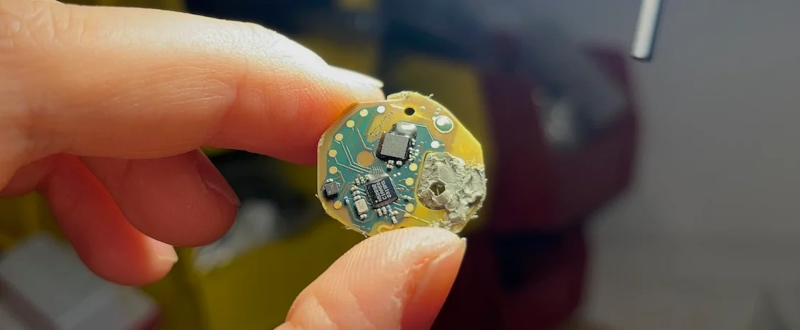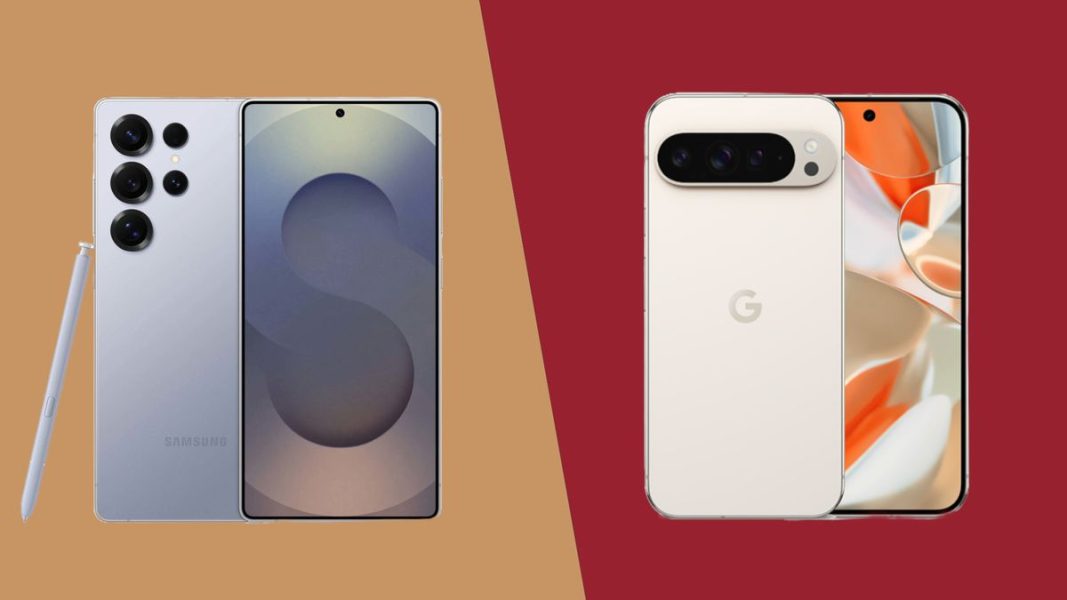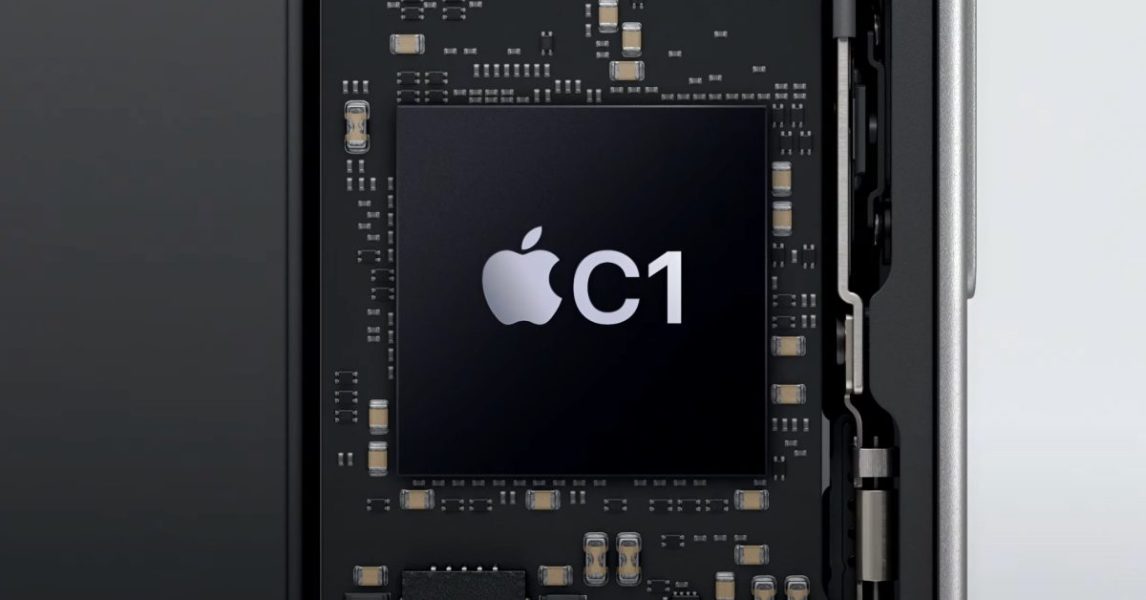Over The Counter Glucose Monitor Dissected – Hackaday

If you deal with diabetes, you probably know how to prick your finger and use a little meter to read your glucose levels. The meters get better and better which mostly means they take less blood, so you don’t have to lacerate your finger so severely. Even so, taking your blood several times a day is hard on your fingertips. Continuous monitoring is available, but — until recently — required a prescription and was fairly expensive. [Andy] noticed the recent introduction of a relatively inexpensive over-the-counter sensor, the Stelo CGM. Of course, he had to find out what was inside, and thanks to him, you can see it, too.If you haven’t used a continuous glucose monitor (CGM), there is still a prick involved, but it is once every two weeks or so and occurs in the back of your arm. A spring drives a needle into your flesh and retracts. However, it leaves behind a little catheter. The other end of the catheter is in an adhesive-backed module that stays put. It sounds a little uncomfortable, but normally, it is hardly noticeable, and even if it is, it is much better than sticking your finger repeatedly to draw out a bunch of blood.So, what’s in the module? Plenty. There is a coin cell, of course. An nRF52832 microcontroller wakes up every 30 seconds to poll the sensor. Every 5 minutes it wakes up to send data via Bluetooth to your phone. There are antennas for Bluetooth and NFC (the phone or meter reads the sensor via NFC to pair with it). There are also a few custom chips of unknown function.[Andy] makes the point that the battery could last much longer than the two-week span of the device, but we would guess that a combination of the chemicals involved, the adhesive stickiness, the need to clean the site (you usually alternate arms), and accounting for battery life during storage, two weeks might be conservative, but not ridiculous.It’s amazing that we live in a time when this much electronics can be considered disposable. CGM is a hard problem. What we really want is an artificial pancreas.This is disposable? What a waste!Still very cool tech.Disposable stuff remains huge in the healthcare field, as it’s kina hard to argue against. If this whole device costs like $0.35 and weighs 2g, who’s going to take even a slight risk of sepsis by sterilising and reusing it 50 times?But if you were hacking it for some non-medical purpose, I’m sure it could be reused for much longer.Yeah I’d like to see the manufacturer take them back and resell parts (no longer fit for medical use of course).But yes even that has serious risks given the bodily fluid contact (for the people handling it after use).My dad used to have the Freestyle Libre sensors. NFC and BT onboard. Believe they have a TI chipset onboard, but modified slightly for Abbott.Would be nice to repurpose them :)An alternative is to waste 28 lancets and 28 test strips, and that’s only for twice-daily testing, which is not enough in some cases. Either way, you’ll also waste 28 syringes. Diabetes makes a lot of waste.I don’t know a single diabetic who only uses a lancet once. Most of us reuse them at least dozens of times. I changed mine about twice a year before I got a cgm.I wonder how much it’d cost if you made it oven or boiling water sterilizable.Very few medical devices other than surgical instruments are sterilized in an autoclave anymore. Boiling in water or high temperature in an oven is not sufficient. Ethylene Oxide is also used, as is high dose radiation. The latter two of which are (or at least should be) well outside the reach of a hobbyist.Peracetic acid and hydrogenperoxide make a verrrry good sterilizer and is completely biodegradable and cheap. Therefore commonly used for cleaning chirurgical equipment.Sterilization isn’t really the issue. The sensor gets less accurate over time. Making it re-insertable would mean it would have to be bigger and much less comfortable to use.In theory it’s a bit of a step back – Dexcom used to have separate transmitters and sensors, where the sensors had a lifetime of 7-10 days (past that is biofouling that screws up the readings in the best case or infection at the worst case) and the transmitter had a lifetime of 3 months limited by the battery (or 6 for the old G4 which used a proprietary TI one-way lowpower protocol instead of Bluetooth)In practice, the benefits gained by making the electronics disposable outweigh the losses. Now, the sensor calibration can be stored in the transmitter. With the G6, you had to enter a pairing code for the transmitter and then a calibration code for each sensor. Even with the calibration code, nearly every sensor I used was WAY off and needed calibration against a fingerstick. It’s also much more water resistant – I still get the sensor thrown off for a few readings during a shower, but it returns to normal within 20 minutes without any significant calibration shifts. With the G6 and earlier, I would often get major calibration shifts after a shower, and on a regular basis the sensor would go out to lunch in a way that readings would get “stuck” and stop properly tracking shifts in my bloodsugar no matter how much I recalibrated.The G7 sensor+transmitter combo warms up in <30 minutes (vs. 2 hours) and is rarely more than 5-10% off initially.The only drawback is that back-of-arm placement vs. abdomen is far more prone to glitches due to stretching/compression at the insertion site.I used to use the Libre CGM that has internals that look very similar to the one in the article. I found that the glucose readings varied drastically between sensors (compared with actual blood glucose readings). I was also not overly fond of the amount of plastic waste that came with using the Libre CGM system, the large 1 time use plastic applicator. I ended up switching to the Medtronic sensors when I (finally) switched to an insulin pump. It’s a different setup where the sensor itself is disposable, but a fair bit smaller. It’s much different from the Libre and the one in this this article insofar as the transmitter that attaches to the sensor is rechargeable. The sensor applicator is also reusable, thereby creating far less plastic waste with each sensor change.It’s crazy how the diabetes tech has changed since I was diagnosed in the early 80s. The blood glucose testing devices of that era required an absurd amount of blood and looked positively medieval by comparison.Look inside the applicator. There’s what appears to be a neodymium magnet in the Dexcom G7 version. I believe it’s to inform the microcontroller that the session has started.There is a tiny 2 or 3 mm magnet. I remove them and use them for holding stuff to my fridge.FYI the Stelo and G7 appear to be 100% identical hardware, with the only differences being firmware.Came here to point out that he missed the magnet! I have a whole stack of them stuck to the metal shelves in my office. There is also a reed switch or hall effect sensor somewhere on the board that activates the sensor when deployed. I also have quite the collection of springs from the applicators (the plastic portions of the applicators are recyclable) as well as a collection of the coin cells.The Abbott Freestyle Libre 3 is a 14 day CGM (the Libre 3 Plus is a 15 day version; 15 days aligns better with most Pharmacy Benefit Manager’s programs that pay a certain amount over 30 or 90 days.) They retail for about $75 each.Possible reasons the CGMs limit their lifetimes is the risk of infection at the catheter entry site, or the life of the adhesive. After 14 days I find that mine are usually at that “beginning to dislodge” phase resulting from unintended contact with clothing, chair arms, or just daily activity. A stronger adhesive would be even harder to remove than their current adhesive, so my skin appreciates them not pushing that technology much further.The Abbott delivery design encloses the module in a sterile plastic applicator. You unscrew the top, and the adhesive side of the module is visible, recessed down inside the applicator body. A protective collar protrudes from and surrounds the module, and serves as the trigger. When you press the applicator to your arm, a spring snaps the tray holding the module onto the back of your arm. A U-shaped blade holding the catheter pierces the skin to a depth of about 6mm. When the mechanism reaches its full travel, the spring retracts the blade safely behind the delivery tray; the entire delivery takes about a quarter of a second, and is not painful. It’s an extremely clever mechanism and very reliable; I’ve not had a failure in the few years I’ve been wearing CGMs.Like the Stelo, once the Freestyle is applied it needs to be activated by an NFC read from the phone app, which then identifies the Bluetooth radio in the CGM. After a 60 minute wait where it’s supposedly auto-calibrating, it starts sending a reading every minute. If the phone is out of range, it will store several days worth of readings (possibly the entire 14 days, but that’s not something I’ve tested.) The phone app beeps loudly if it’s out of range of the CGM for more than about 10 minutes.The nickel-sized module is 21mm in diameter, 3mm thick, and weighs just 0.9g. Inside, an SR716W cell spot welded to the circuit powers the device. There’s a convoluted freestanding metal Bluetooth antenna that is mounted over the chips; it’s connected to a wide trace that encircles the outside of the PCB, terminating in the discrete components near the smaller chip. Removing the antenna reveals a crystal labeled 48.000, a larger (2.5mm) unmarked chip, a smaller (1.25mm) unmarked chip, and about a dozen SMDs ranging from about 0603 to 01005. The largest other feature is a plastic housing that interfaces with the catheter. The back of the board has 14 test pads exposed, a thin coiled trace that runs three times around the edge of the board (likely the NFC antenna) and no components.And yeah, I want to know more but the two unlabeled chips aren’t likely to give up their secrets.I have found over the last 3 months using the Stelo / Dexcom sensor there is a high failure rate which means the sensor does not survive the entire 15 days as they represent. It’s a bit annoying, but they keep sending me free replacements. There has only been 1 sensor during the 3 months that has reached the 15 day period…this needs to be improved hopefully…I used to use the libre, but it never read the same as when I used my regular finger prick style glucose tester. then I read that it doesn’t read BLOOD glucose levels, but INTERSTITIAL glucose levels, Which are different based on you levels of physical activity. The service tech side of my day can’t rely on this because it will read my blood sugar as low when it isn’t, and I have to do the finger prick anyway. If I’m going to have to do it anyway, I see no point in using something that gives me MAYBE the right reading only once in a while. I also have had at least half of the ones I use fall off unless they are under a very large bandaid. They just weren’t worth the expense and since I have to prick my fingers every time to make sure it’s accurate. . . it was just a waste of money for me. I did take one apart once, but just to see inside. Coin cell, small antenna, a chip I had no hope of reading, etc. It is a waste of tech to be sure, and not a very good product.In regards to the CGM reading being different from a finger prick, the user needs to keep in mind that the CGM is showing you what your blood glucose was about 15-30 minutes ago. With mine, if I do a finger prick and then compare that reading to the CGM 15 minutes later, they are normally pretty close. If your body is very sensitive to low glucose, it may not be the right product for you. It is something to discuss with your doctor.The Libre style applicator can be ‘torn down’ for recycling, albeit with some effort, and also taking care to clip the needle off and enclose in, say, adhesive tape. I have experienced only 3 failures of the sensor disks in 3 years, and only one occasion where the adhesive let go prematurely. More annoying for me is the Libre 3 monitor’s battery life between charges (My android phone doesn’t work with the Libre sensor). Having found a lithium battery of 650 mAH capacity rather than the stock 350, having only a slight thickness increase, I dismantled the reader (quite a challenge, as the two halves are glued), relieved the back shell, and reassembled. I now get about 5 days on a charge, instead of about 2.I have been using the Dexcom G7 for nearly a year. I have had only one failure in all that time to last the entire 10.5 days of specified usage. The half day is the “grace” period that I always take advantage of. I am very careful not to use lotions, designer soaps and shampoos with oils of various sorts near it. The oils put in some skin products today do bad things to the adhesives used to keep the CGM in place. I cannot imagine living without a CGM anymore. It is a potential lifesaver for insulin dependent diabetics.Lusted after the sensor. Thanks for hacking the system on how it works because I sure cant get any real, valid data from the medical bunch.. Guess I stick to my current regimen of poking a random finger twice daily. Not a big deal if you have carpal tunnel syndrome and your hands are numb.I have type 2 ‘betes, but just barely. After getting the riot act read to me by my endocrinologist, I insisted on them writing a note for a CGM for me, specifically the Dexcomm units because the LIbre 3 was on back order at the time. I have a pocket summary for the 6 months I’ve been using the units:It doesn’t fully replace the finger poke method, and I’ve confirmed that the numbers it spits out are on a 15-30 minute lag from the finger poke method. (the whole interstitial / blood source).to clarify, the sensors do have a tiny, flexible needle that it collects samples through- be gentle when removing it and be mindful of the little prick. :)It’s less mess and easier to just look at the app on the phone rather than take the 5-10 minutes to dig out the case with the BGM, prep and take the reading, and then record it. And if you are doing the recommended ‘reading before and after meals’, that’s no less than 6 times a day, and the strips can get expensive in a hurry. I still lug the thing around in the event the CGM is throwing an oddball number that doesn’t quite match what my body’s internal senses are telling me, though.Dexcomm’s additional features is an A1c analog called GMI (Glucose Management Indicator) which gives you a reasonable number to use for on the spot indications, along with their Clarity module and data connectors for remote monitoring by trusted family members and the prescribing physician.The stelo units are the same hardware as the G7, but with different firmware, and hence a different app to collect readings from. And IIRC, the data can’t be shared between apps. (I have a pair of Stelo units as backups in case of insurance shenanigans, so that is a supposition. Corrections are welcome.)I’ve been lucky in that I’ve not had any bad units yet, nor have I had any that have fallen off- I use a 3rd party overpatch that goes on over both the adhesive on the sensor and the overpatch that the sensors come with, and it’s been pretty rugged.I have used Stelo several times and have found it wildly inaccurate compared with just fingerstick, e.g. some comparative samples 180:140, 182:128, 212:157, 172:142, 250:210, thus completely useless. So disappointing.I had a similar experience with Freestyle, but it seemed to be tied to one supplier. Makes me think there’s something about how they are shipped or something.The sensor lifetime is limited by the enzymatic reaction of the invasive sensor filament. The enzymes run out or go bad. Also the enzymes are sensible to hot and cold temperatures during storage and transport. We use some CGM devices for a clinical study (pre-registered RCT).Please be kind and respectful to help make the comments section excellent. (Comment Policy)This site uses Akismet to reduce spam. Learn how your comment data is processed. By using our website and services, you expressly agree to the placement of our performance, functionality and advertising cookies. Learn more Source: https://hackaday.com/2025/02/23/over-the-counter-glucose-monitor-dissected/



